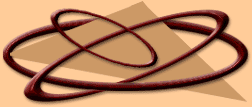
| What is Calisthenics? | Competitions | Elements of Calisthenics | Opportunities | Males in Calisthenics |
| Calisthenics! |
 |
|
| Elements of Calisthenics |
The word Calisthenics is derived from the greek words "kallos" meaning beauty and "sthenos" meaning strength. These descriptions can certainly be seen in the many elements that comprise Calisthenics. Perhaps the most well-known of these are the apparatus items. Calisthenics has two different apparatus items, club swinging and rod twirling. These items can often involve complex choreography and apparatus movements and patterns and demand a high level of co-ordination and ability to be in synch. with the rest of the team. The clubs in Calisthenics are similar to those of the sport Rhythmic gymnastics and involve performing mills, swining movements, planing, and often involve asyncronous movement (eg the left club moves in opposite direction to the right club). The Rod is used in routines in much the same way as in those 1920s movies where they dance with a cane (think Charlie Chaplin!). Additional elements The elements mentioned above are always performed as part of a calisthenics competition. Additionally, there are several other elements of Calisthenics which are not as widely used and may or may not be performed depending on the year. Some may only be performed by certain age groups, and some may only be seen at end-of-year performances, not competitions. These extra elements include: Folk Dance, Song and Dance (Jazz dancing combined with singing), Rhythmic Dance Interpretation (much like ballet), Action song (for kids), and the Calisthenic Spectacular, a combination or demonstration of all elements of calisthenics. A true celebration of the sport! |
This page (c) Andrew McQueen 2000. Last Updated 8/11/2000 |